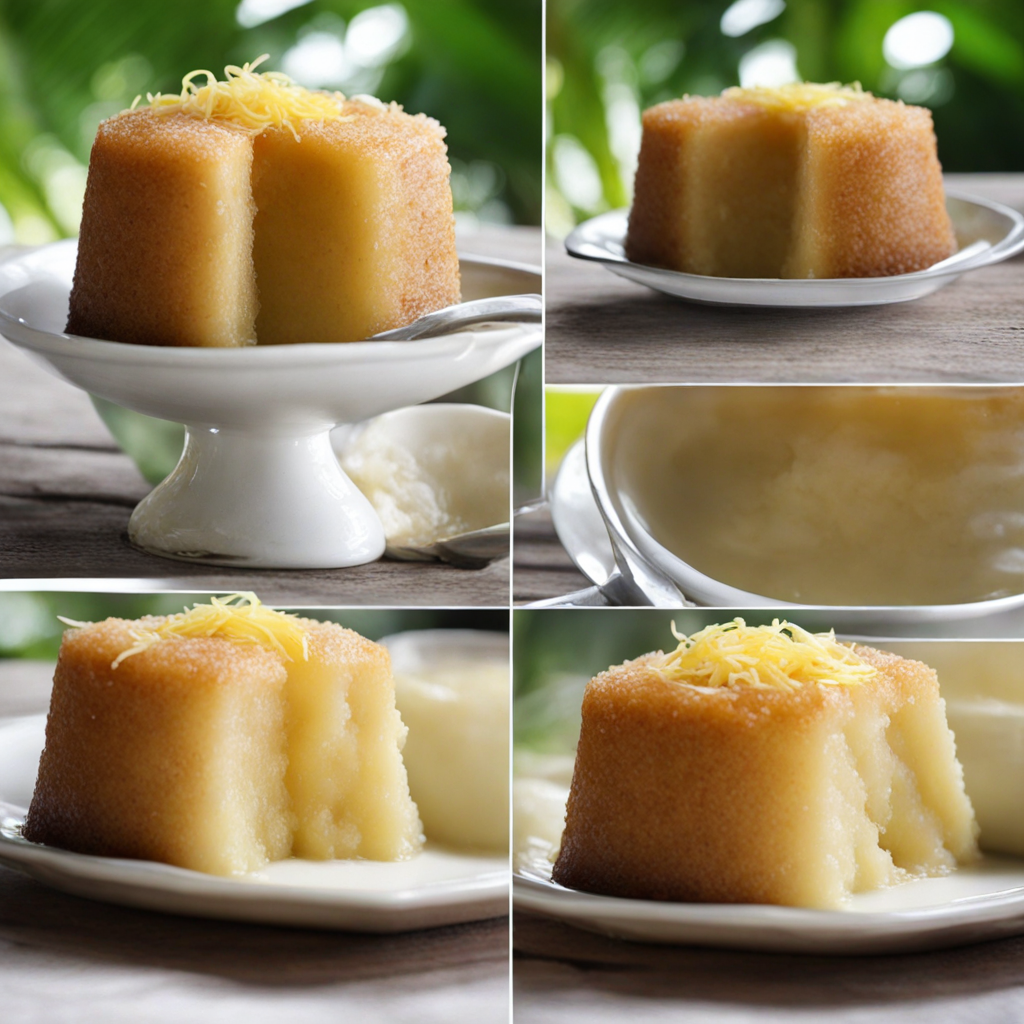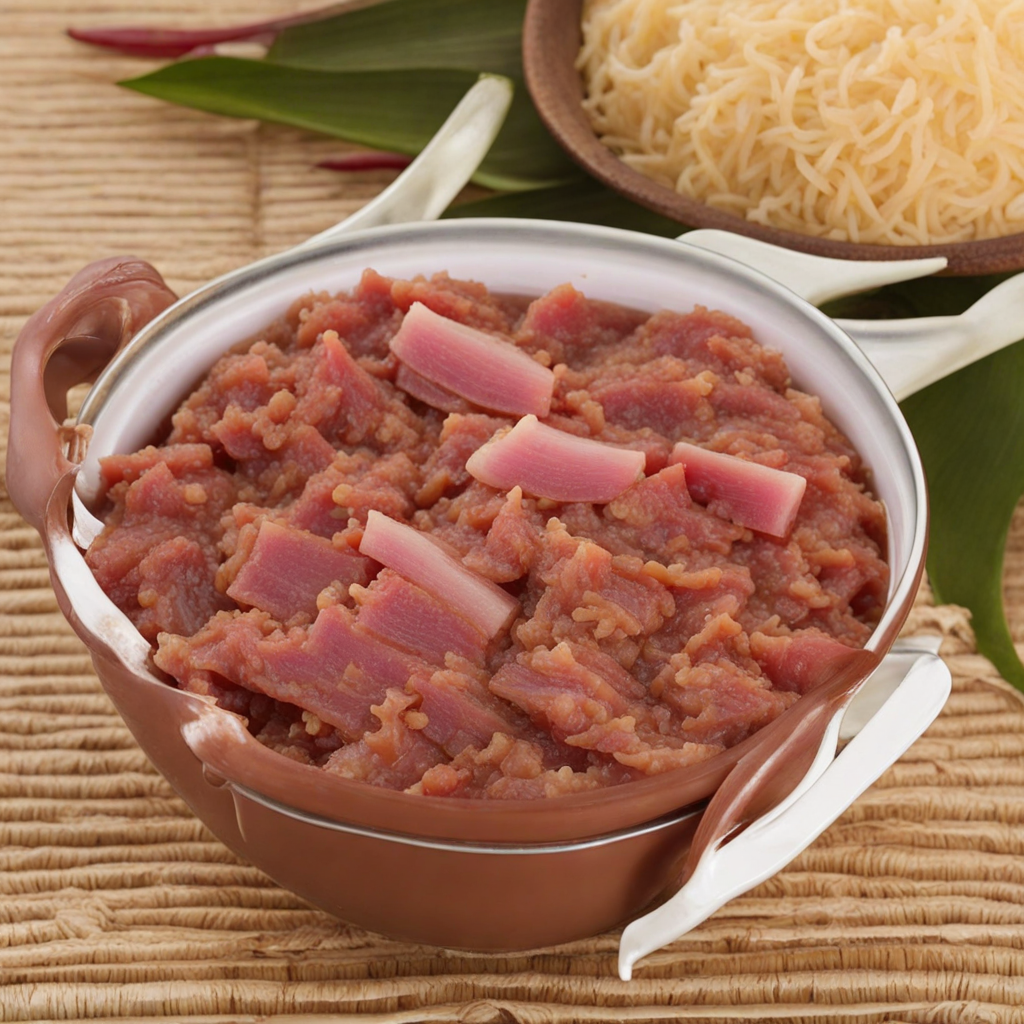Puligi
Puligi is a traditional Samoan dish that beautifully encapsulates the island's rich culinary heritage. At its core, Puligi consists of tender, slow-cooked taro leaves, which are often layered with coconut cream and various proteins such as fish or meat. The dish is typically seasoned with a blend of local herbs and spices, creating a harmonious balance of flavors. The vibrant green of the taro leaves contrasts with the creamy white of the coconut, making it as visually appealing as it is delicious. The preparation involves wrapping the ingredients in banana leaves, which infuse the dish with a subtle earthy aroma during the cooking process, often done in an underground oven called an 'umu'. The texture of Puligi is one of its standout features. The taro leaves become soft and velvety, while the coconut cream adds a luscious richness that envelops each bite. As you delve into the dish, you'll discover pockets of flavor from the added protein, which melds seamlessly with the creamy base. Each mouthful is a delightful experience, showcasing the natural sweetness of the coconut and the earthiness of the taro, complemented by the savory notes of the fish or meat. This dish is a testament to the Samoan philosophy of utilizing fresh, local ingredients, making it not only a meal but a celebration of the island's bounty. Eating Puligi is often a communal experience, reflecting the Samoan culture of sharing and togetherness. It is commonly enjoyed during feasts and special occasions, where families and friends gather to relish in the flavors and stories of their heritage. The dish’s origins are steeped in tradition, with recipes passed down through generations, ensuring that each family adds its unique touch. Whether you're savoring it at a local gathering or preparing it at home, Puligi promises to be a memorable introduction to the vibrant tastes of Samoa, inviting you to explore the island's gastronomic landscape.
How It Became This Dish
The History of Puligi: A Culinary Gem of Samoa Puligi, a traditional Samoan dish, is a delightful representation of the rich tapestry of flavors, cultural significance, and communal practices that characterize Samoan cuisine. This dish, which primarily features taro leaves cooked with coconut cream, is more than just a meal; it is a symbol of Samoan identity, heritage, and the communal spirit that pervades the islands of the South Pacific. #### Origins The origins of Puligi can be traced back to the ancient Polynesian settlers who first arrived in Samoa around 3,000 years ago. These early inhabitants brought with them an array of agricultural knowledge, selecting crops that thrived in the tropical climate of the islands. Taro (Colocasia esculenta), a staple root vegetable in the Pacific Islands, became a central element in Samoan cuisine. The taro plant thrives in wet, marshy environments, making it well-suited to the volcanic soils of Samoa. The preparation of Puligi is deeply rooted in the traditional cooking methods of the Samoan people. Historically, food in Samoa was cooked in an underground oven known as an “umu,” where the combination of hot rocks and earth created a unique steaming effect. This method of cooking not only infused the food with flavors but also served as a communal activity, with families and friends gathering to prepare and share meals. The name "Puligi" itself has its roots in the Samoan language, where "pu" refers to a bundle or a group, and "ligi" translates to "to cook." Thus, Puligi can be interpreted as "cooked bundles," alluding to the way taro leaves are often wrapped around a filling, typically a mixture of taro or fish, and then steamed. #### Cultural Significance Puligi holds significant cultural value for the Samoan people. It is often served during special occasions, including family gatherings, feasts, and celebrations such as weddings and birthdays. The dish embodies the Samoan principle of “fa'a Samoa,” which translates to "the Samoan way," emphasizing the importance of community, hospitality, and sharing. In Samoan culture, food is a means of fostering relationships, showing respect, and expressing love. The preparation and consumption of Puligi also reflect the traditional practices of the Samoan people. The process often involves collaboration among family members, with each person contributing their skills, whether it be harvesting, preparing, or cooking the ingredients. This communal approach not only strengthens family bonds but also reiterates the values of cooperation and unity that are central to Samoan society. Moreover, Puligi is often accompanied by other traditional dishes, such as “palusami,” which is made from young taro leaves, coconut cream, and sometimes a protein source like fish or pork. The combination of these dishes on the table represents abundance and generosity, reinforcing the significance of sharing food in Samoan culture. #### Development Over Time As the world around Samoa has changed, so too has the dish of Puligi. The introduction of new ingredients and cooking techniques, influenced by globalization and cultural exchange, has led to variations of the traditional dish. While the classic Puligi remains a beloved staple, modern interpretations often incorporate different flavors and ingredients, reflecting the dynamic nature of Samoan cuisine. In recent years, Samoa has seen a resurgence of interest in traditional foods and cooking methods, spurred by a growing awareness of the health benefits associated with indigenous ingredients. The increasing emphasis on sustainable farming and local sourcing has renewed the appreciation for taro and coconut, the primary components of Puligi. This movement has led to a revival of traditional cooking methods, such as the umu, which many young Samoans are learning to appreciate and master. Additionally, as Samoan communities expand beyond the islands—particularly in New Zealand, Australia, and the United States—Puligi has gained popularity among the diaspora. Here, it acts as a culinary bridge connecting Samoans with their heritage, allowing them to share their culture with the broader communities they inhabit. Food festivals, cultural events, and community gatherings often feature Puligi, where it is prepared and shared, reinforcing the collective identity of Samoan communities abroad. The adaptation of Puligi in various contexts has also led to the incorporation of fusion elements, where chefs combine traditional Samoan flavors with international cuisines. This evolving nature of Puligi is a testament to the resilience and creativity of Samoan culinary traditions, ensuring that they remain relevant in an ever-changing world. #### Conclusion Puligi is more than just a dish; it is a culinary narrative that encapsulates the history, culture, and community of the Samoan people. From its origins as a staple food among ancient Polynesian settlers to its contemporary significance in both Samoa and the diaspora, Puligi symbolizes the enduring legacy of Samoan culinary practices. As the world continues to change, the spirit of Puligi remains constant—rooted in tradition yet adaptable to modern influences. It serves as a reminder of the importance of community, the joy of sharing meals, and the rich flavors of a culture that has been nurtured over millennia. Whether enjoyed in a traditional umu or prepared in a modern kitchen, Puligi will continue to evoke the warmth of Samoan hospitality and the vibrant heritage of its people for generations to come.
You may like
Discover local flavors from Samoa







